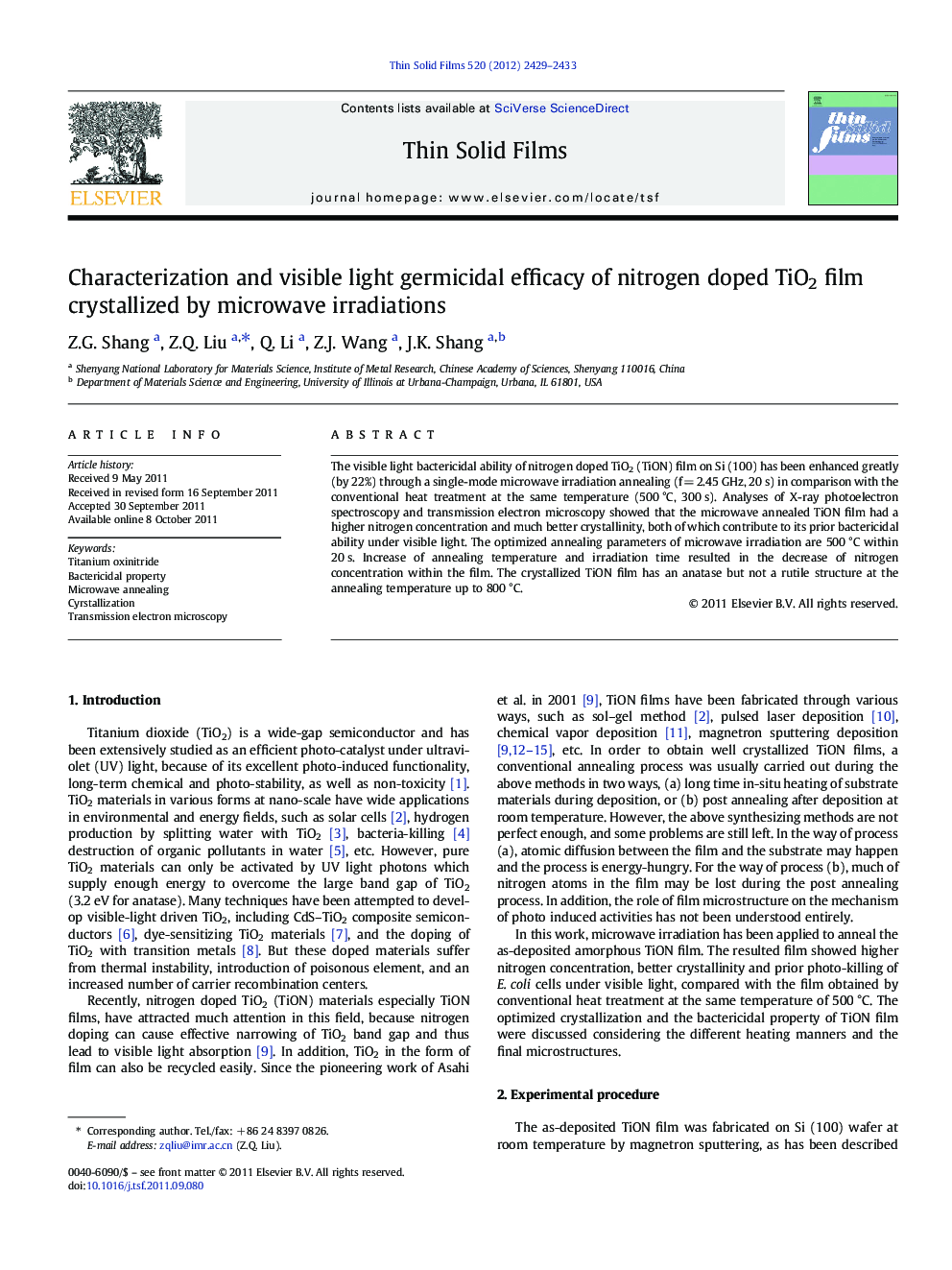| Article ID | Journal | Published Year | Pages | File Type |
|---|---|---|---|---|
| 10669989 | Thin Solid Films | 2012 | 5 Pages |
Abstract
The visible light bactericidal ability of nitrogen doped TiO2 (TiON) film on Si (100) has been enhanced greatly (by 22%) through a single-mode microwave irradiation annealing (f = 2.45 GHz, 20 s) in comparison with the conventional heat treatment at the same temperature (500 °C, 300 s). Analyses of X-ray photoelectron spectroscopy and transmission electron microscopy showed that the microwave annealed TiON film had a higher nitrogen concentration and much better crystallinity, both of which contribute to its prior bactericidal ability under visible light. The optimized annealing parameters of microwave irradiation are 500 °C within 20 s. Increase of annealing temperature and irradiation time resulted in the decrease of nitrogen concentration within the film. The crystallized TiON film has an anatase but not a rutile structure at the annealing temperature up to 800 °C.
Keywords
Related Topics
Physical Sciences and Engineering
Materials Science
Nanotechnology
Authors
Z.G. Shang, Z.Q. Liu, Q. Li, Z.J. Wang, J.K. Shang,
